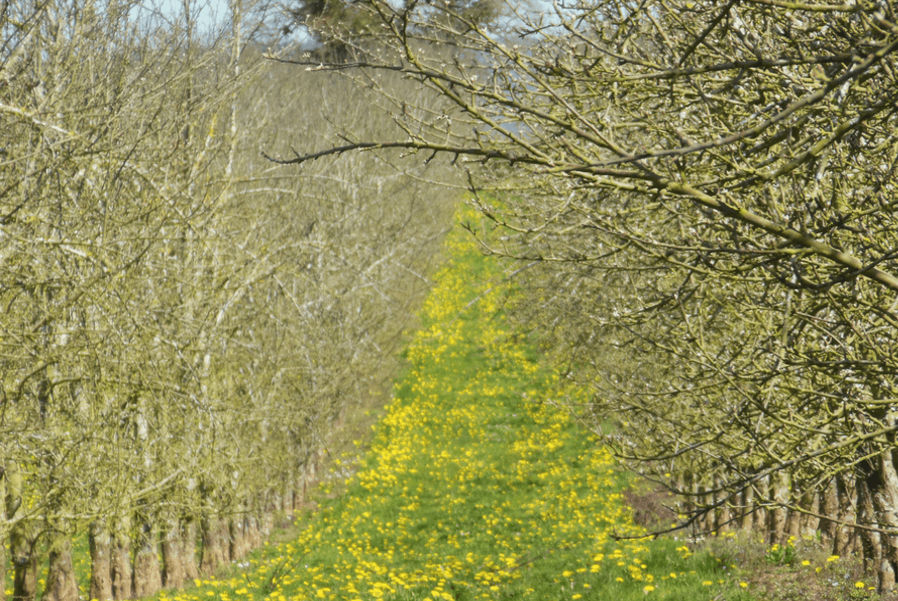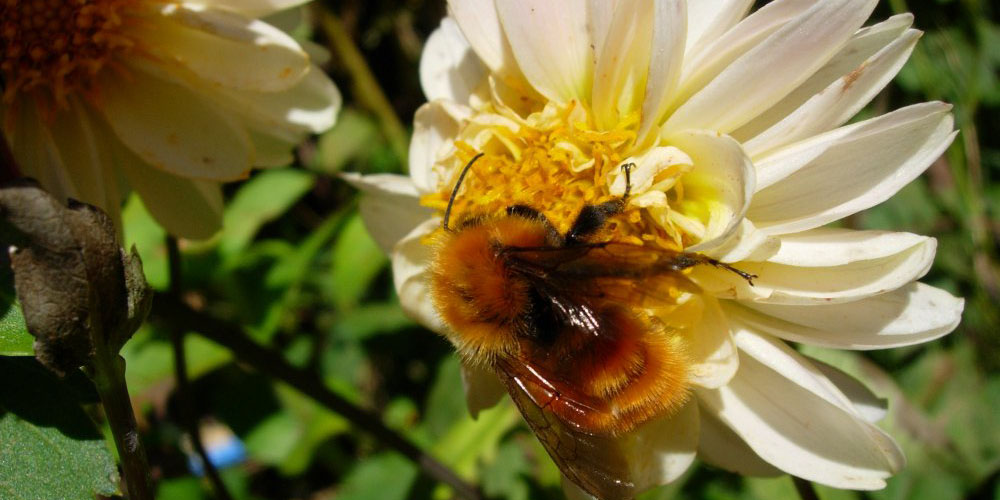Carl Linnaeus invented the floral clock – perhaps not his most famous accomplishment. But it’s a curious thing and, turning it into a game, it may be a great way to create interest in flowers. And pollination ecology. And bees. But lets start from the beginning: Each flower has a defined rhythm, some open already in the early morning. Others wait until the sun is already high. Again others go to sleep very early – for instance, in the later afternoon dandelion flowers close. This picture would look completely different if I had taken it in the later afternoon:

Dandelion looking gorgeous in the early morning in an apple orchard. In the afternoon, it closes its flowers.
Water lilies on the other hand open early in the morning and persist until the evening.

Water lilies at beginning sunset in the garden of Cluj University, Romania.
Some plant species vary their opening and closing times, depending on the weather or the day length (photoperiod). But they are others that like their routine. They open every day at the same time and close at a certain hour. Linnaeus made these observations and developed his floral clock (copyright for the example above: Jan Thorbecke Verlag, 2009). In 1745, the first one was planted in the Botanical Garden in Uppsala (Sweden). There is an anecdote that Linnaeus was able to tell the time with five minutes accuracy, just looking out of his window.
The floral clock and pollinator activity
Of course, the background of the floral clocks was not know when it’s time for lunch. Linnaeus observed the different opening and closing times and saw the link to the activity of their pollinators. He concluded that the “specialisation” on certain daytimes reduced the competition with other plants for pollinators and as well between pollinators themselves. This means that bees have to “know” as well.
In fact, honey bees have a sense of time. In some spectacular experiments Karl von Frisch studied this. At the beginning, he trained foragers on a artificial food source, where he offered sugar water only at certain times. After a while, the workers learned that they got something only at these times. They even showed up when the experimental “flowers” were filled at five different times a day. After this, von Frisch wanted to know if the honey bees also managed to deal with slighter differences: he provided sugar water all day long, but at certain times it was more abundant or sweeter. And the foragers appeared in higher numbers when the food source was more attractive. But how do the bees know what time it is?
To test this, von Frisch held his honey bees in darkrooms, with no natural light or external daily rhythms. However, he managed to train the bees also under these conditions to temporal food sources. He now tested if honey bees have an internal clock: he transported two identical darkrooms with bees, one to Paris and one to New York. Consider that these experiments were done in the late 1920s, early 1930s! Flying wasn’t as normal as it is today. Another anecdote says that the pilot for the flight between Paris and New York refused to take off with living bees in his plane. Von Frisch “convinced” him by saying that if he didn’t start he would release the bees… No idea if this is true. Anyway, at the end there was the exactly same experimental setting at Paris and at New York.
Bees with sense of time
If the bees in the dark room still perceived some external factor to regulate their activity, those in New York should shift their activity according to their new location. But this didn’t happen, they still collected their sugar water at the trained time, as if they were in Paris. This is an indication for “internal circadian rhythms”, as it is called when organisms have daily rhythms. Like you getting hungry every day at noon or waking up more or less at the same time also without an alarm clock.
But, as I always stress in this blog, honey bees are only one species out of 20,000. What about other bees? In a quick search, and the help of @biotweeps on twitter, I found more recent data for honey bees and bumblebees, but nothing for solitary species. On the other hand, there must be such an internal clocks for them also, especially for oligolectic bees. For instance, the pantaloon bee (one of those that still refuse to get photographed by me) is oligolectic on chicory. Which closes its flowers already at noon. Therefore, pantaloon bees are active only in the morning as well. Did anybody study the chronobiology of solitary bees?
These questions do have practical and conservation consequences. For instance, in a study in oilseed rape in which we assessed the exposure of honey bees to a certain pesticide, we discussed if we should intensify our observations at certain times when the nectar secretion is higher. More attractiveness for the foragers could mean a higher exposure for the colonies. The aspect of flower opening, nectar secretion and pollinator activity times could be also important for the development of pollinator friendly seed mixtures. You could teach children about flowers and bees and why they are important with observing these rhythms. My personal conclusion however is a very simple one: I need a floral clock on my terrace.



